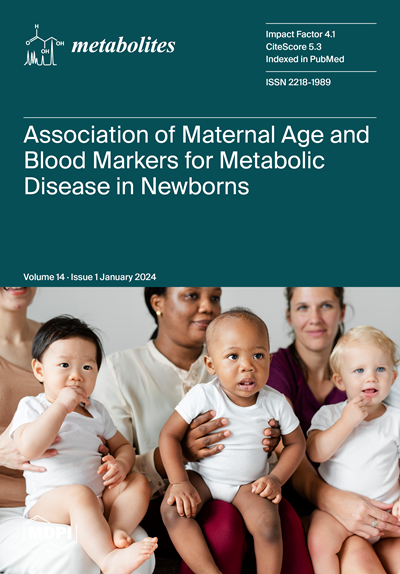Urinary Biomarkers of Strawberry and Blueberry Intake
IF 3.4
3区 生物学
Q2 BIOCHEMISTRY & MOLECULAR BIOLOGY
引用次数: 0
Abstract
Introduction There is increasing interest in food biomarkers to address the shortcomings of self-reported dietary assessments. Berries are regarded as important fruits worldwide; however, there are no well-validated biomarkers of berry intake. Thus, the objective of this study is to identify urinary biomarkers of berry intake. Methods For the discovery study, participants consumed 192 g strawberries with 150 g blueberries, and urine samples were collected at 2, 4, 6, and 24 h post-consumption. A dose–response study was performed, whereby participants consumed three portions (78 g, 278 g, and 428 g) of mixed strawberries and blueberries. The urine samples were profiled by an untargeted LC-MS metabolomics approach in the positive and negative modes. Results Statistical analysis of the data revealed that 39 features in the negative mode and 15 in the positive mode significantly increased between fasting and 4 h following mixed berry intake. Following the analysis of the dose–response data, 21 biomarkers showed overall significance across the portions of berry intake. Identification of the biomarkers was performed using fragmentation matches in the METLIN, HMDB, and MoNA databases and in published papers, confirmed where possible with authentic standards. Conclusions The ability of the panel of biomarkers to assess intake was examined, and the predictability was good, laying the foundations for the development of biomarker panels.草莓和蓝莓摄入量的尿液生物标志物
引言 人们对食品生物标志物的兴趣与日俱增,以解决自我报告膳食评估的不足。浆果被认为是世界上重要的水果,但目前还没有经过充分验证的浆果摄入量生物标志物。因此,本研究旨在确定浆果摄入量的尿液生物标志物。方法 在发现研究中,参与者食用 192 克草莓和 150 克蓝莓,并在食用后 2、4、6 和 24 小时收集尿液样本。在剂量反应研究中,参与者食用了三份(78 克、278 克和 428 克)混合草莓和蓝莓。采用非靶向 LC-MS 代谢组学方法对尿液样本进行了阳性和阴性分析。结果 数据统计分析显示,从空腹到摄入混合浆果后 4 小时,阴性模式中有 39 个特征显著增加,阳性模式中有 15 个特征显著增加。在对剂量反应数据进行分析后,21 个生物标志物在不同浆果摄入量之间显示出整体意义。利用 METLIN、HMDB 和 MoNA 数据库以及已发表论文中的片段匹配结果对生物标志物进行了鉴定,并尽可能使用真实标准进行确认。结论 检验了生物标记物小组评估摄入量的能力,其可预测性良好,为开发生物标记物小组奠定了基础。
本文章由计算机程序翻译,如有差异,请以英文原文为准。
求助全文
约1分钟内获得全文
求助全文
来源期刊

Metabolites
Biochemistry, Genetics and Molecular Biology-Molecular Biology
CiteScore
5.70
自引率
7.30%
发文量
1070
审稿时长
17.17 days
期刊介绍:
Metabolites (ISSN 2218-1989) is an international, peer-reviewed open access journal of metabolism and metabolomics. Metabolites publishes original research articles and review articles in all molecular aspects of metabolism relevant to the fields of metabolomics, metabolic biochemistry, computational and systems biology, biotechnology and medicine, with a particular focus on the biological roles of metabolites and small molecule biomarkers. Metabolites encourages scientists to publish their experimental and theoretical results in as much detail as possible. Therefore, there is no restriction on article length. Sufficient experimental details must be provided to enable the results to be accurately reproduced. Electronic material representing additional figures, materials and methods explanation, or supporting results and evidence can be submitted with the main manuscript as supplementary material.
 求助内容:
求助内容: 应助结果提醒方式:
应助结果提醒方式:


